Louis Arata's Blog, page 2
January 3, 2023
The Top Ten Books (I've Read) of 2022
I can always tell that I need a bit of grounding in turbulent times when I find myself turning to Winnie-the-Pooh. The bear of very little brain and very big heart always refreshes my weary spirit. Reading A.A. Milne’s stories and poems brings me back to my childhood.
Other touchstones of nostalgia over the past year include reading about TV sitcoms and variety shows of the 1970s, in particular The Mary Tyler Moore Show and The Carol Burnett Show. Behind-the-scenes stories of these classics brought back a lot of wonderful memories.
Over the year, I also revisited 10 books I’d read before. As Ursula K. LeGuin said: “If a book told you something when you were fifteen, it will tell it to you again when you’re fifty, though you may understand it so differently that it seems you’re reading a whole new book.”
One book I reread was She Stoops to Conquer, by Oliver Goldsmith. In my freshman year of high school, this was my very first theatre production. Reading it again, I wondered how much of the story I would remember. As it turns out, very little. What mostly sticks in my mind is the awful moment on stage when I forgot my lines.
There were plenty of surprises and delights this year: discovering new authors, reading outside my comfort zone, and challenging myself to learn a bit more history and current events. It’s typical of me to read two to three books at a time, but this year I read a few books in tandem – alternating back and forth – as they addressed similar themes or subject matters. Getting different perspectives on the same events often opened the door to better understanding of history.
In alphabetical order by author, here are my top ten books:
The Top Ten :
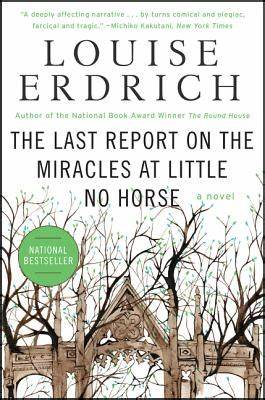
,The Last Report on the Miracles at Little No Horse
Louise Erdrich
Father Jude has been sent to investigate the seemingly miraculous events occurring on a reservation in North Dakota. There, he meets the 100-year-old Father Damien, who has been a missionary among the indigenous population for over 80 years. Damien shares the histories of the Anishinaabe – how families blend and intersect – but he also knows the secrets surrounding the miracles. But the mysteries don’t end there, because Father Damien is actually Agnes DeWitt, a nun who has adopted the priest’s identity. Erdrich’s novel blends the themes of spirituality, gender fluidity, family, and resilience across the sprawling history of the reservation. Magical.

,Billy Lynn’s Long Halftime Walk
Ben Fountain
The eight members of Bravo Squad are Iraqi war heroes. A two-week Victory Tour culminates in the half-time show at a Dallas Cowboys’ football game. At first, the adulation is heady, but Billy begins to question the authenticity of American-style patriotism. Surrounded by the bombast of jumbotron screens, endless handshakes, cheering, and free-flowing booze, Billy recognizes that for most Americans, the war is just a big football game that you cheer from the sidelines. An incisively satiric novel that made my head spin.
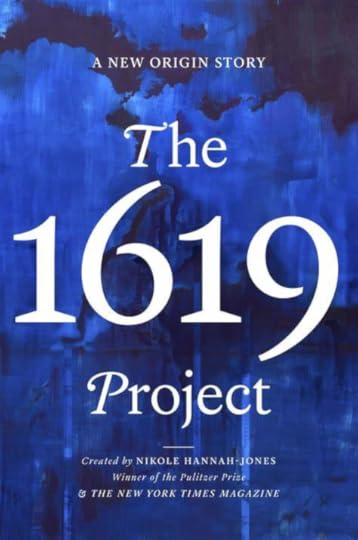
,The 1619 Project: A New Origin Story
Nikole Hannah-Jones, ed.
The 1619 Project is an evolving journalism project which examines the long-reaching consequences of slavery on the shaping of the U.S. A New Origin Story is a collection of essays and poems which address the threads of racism and marginalization through issues such as capitalism, politics, health care, music, and justice. While every historical study has a particular agenda in what is and isn’t included, The 1619 Project for me was honest, challenging, and ultimately true in chronicling aspects of American culture which are often overlooked. A seminal work.

The Essential Martin Luther King, Jr.
Martin Luther King, Jr.
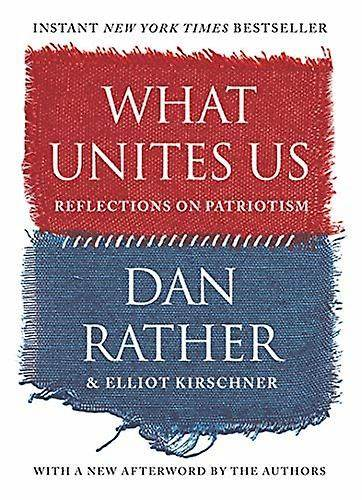
What Unites Us: Reflections on Patriotism
Dan Rather
Two books that are essentially about patriotism. As Dan Rather writes, “Patriotism, while deeply personal, is a dialogue with your fellow citizens, and a larger world, about not only what you love about your country but also how it can be improved.” Both King and Rather express profound respect for the ideals of the U.S., but each in their own way is challenging us to address the racism, xenophobia, poverty, sexism, as well as other issues that prevent us from living in a just society. King’s language soars, and Rather’s prose is poetic, but together they create a powerful chorus.

,John Adams
David McCullough
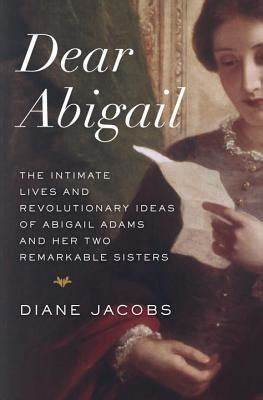
,Dear Abigail
Diane Jacobs
John and Abigail Adams had a rich correspondence across the course of their marriage in which they discussed politics, war, society, and interspersed it all with their devotion and adoration for each other. I read these two bios in tandem, often switching from one to the other to keep the chronologies in line. McCullough’s bio of John Adams has breadth of scope and examines the political forces and personalities which shaped the colonies into the United States. Jacobs’ bio of Abigail Adams provides an intimate portrait of family relationships, poking around in the corners and cubbyholes of day-to-day life, while also providing eye-witness accounts of the Battle of Boston and the smallpox plague. By alternating between the two books, I was able to appreciate how historians also shape histories by what they choose to include and what is left out.
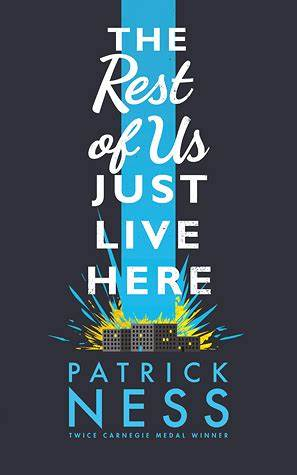
,The Rest of Us Just Live Here
Patrick Ness
The next supernatural apocalypse is always around the corner, and there are always those special Chosen Ones who will keep it from happening. But Mikey is not one of them; he is an ordinary high school student who just happens to live in the town where it all happens. Mikey and his friends are conscious of the peculiar events that continually unfold – vampires, aliens, gods from other dimensions – but they are too busy living their lives and trying to get to graduation day. Patrick Ness’s book is a brilliant study of the personal challenges we all face, and even if we’re not the ones saving the world, we do save each other.

Everything That Rises Must Converge
Flannery O’Connor
Short stories are an art form, and most writers will tell you that they are harder to write than novels. And Flannery O’Connor is held up as a shining example of how-to-do-it-right. Her stories have a Southern Gothic flare that critically examine her characters’ limitations. Through painful lessons of hard-natured grace, people must face their prejudices and narrow-mindedness, and it’s not easy. I confess that reading stories set in the 1950s and ‘60s was challenging, due to the racist behavior prevalent at the time, but O’Connor is unapologetic about human foibles.
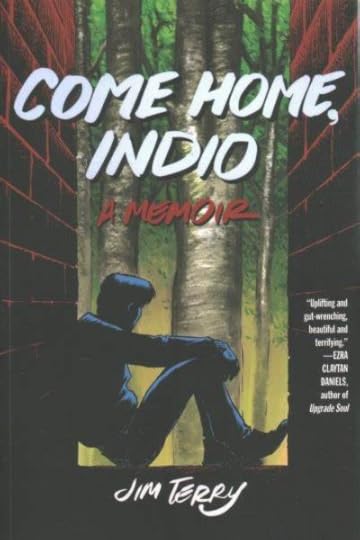
,Come Home, Indio
Jim Terry
In this graphic novel memoir, Jim Terry shares the trajectory of his life – a child of alcoholic parents and his own battle with alcohol. A raw, unyielding story that does not shy away from the cyclic, destructive behavior that arises out of family dysfunction. Ultimately, though, this is a journey of self-discovery, as Terry chronicles his recovery and his new sense of self-worth. The illustrations are powerful, and the story will definitely stay with me.
,Honorable Mentions :
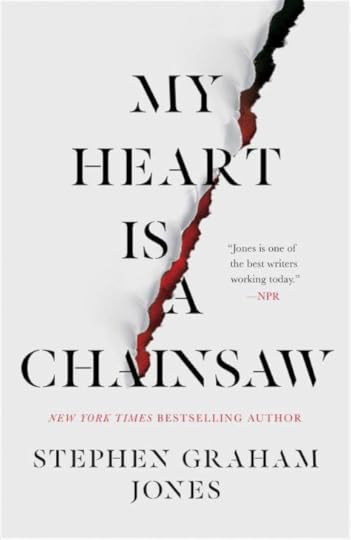
My Heart is a Chainsaw
Stephen Graham Jones
An homage to the slasher film. Jade Daniels, who knows everything about horror movies, begins to suspect a serial killer has hit her hometown of Proofrock. The only problem is no one will believe her – a troubled teen with a troubled past. In their eyes, her fascination with horror movies is a cry for help. For Jade, the movies prepare her for the evil that is to come.
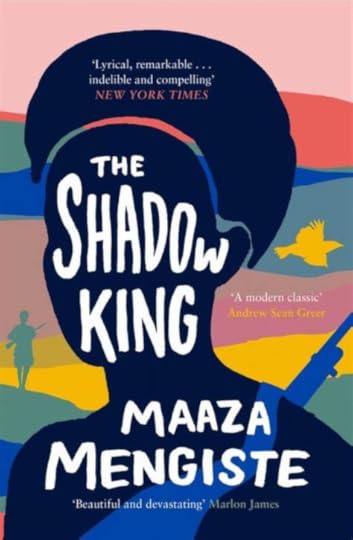
The Shadow King
Maaza Mengiste
Mengiste explores gender roles, identity, and the fluid nature of memory – set against the backdrop of the Italian-Ethiopian war. A piece of history I’d never heard about before.
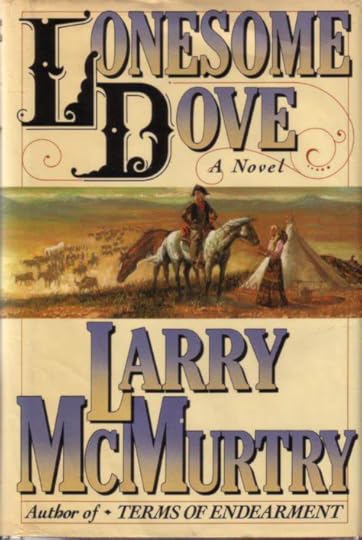
,Lonesome Dove
Larry McMurtry
McMurtry takes the reader on a mosey through the west as Rangers Gus McCrae and Woodrow McCall lead an epic cattle drive from Texas to Montana. I first read this book 27 years ago, and I am amazed how much I remembered. Not merely the gist of the story, but individual scenes and the abundant cast of characters. Thoroughly enjoyable.

,Young Mungo
Douglas Stuart
Fifteen-year-old Mungo lives in tenement housing with his alcoholic mother, gang-leader brother, and pregnant sister. There isn’t much hope to be had, until Mungo discovers friendship and love with James. A meditation on loneliness, growing up, and finding out who you are.
,The complete list of books is below :
Who’s Afraid of Virginia Woolf? Edward Albee
Leah on the Offbeat, Becky Albertalli
Before Night Falls, Reinaldo Arenas
We Had to Remove This Post, Hanna Bervoets
Dogs on the Trail: A Year in the Life, Blair Braverman & Quince Mountain
This Time Together: Laughter and Reflection, Carol Burnett
Directed by James Burrows, James Burrows
Relax into Yoga for Seniors, Kimberly Carson & Carol Krucoff
The Sittaford Mystery, Agatha Christie
All You Can Ever Know, Nicole Chung
Little Dorrit, Charles Dickens
Dreyer’s English, Benjamin Dreyer
The Souls of Black Folk, W.E.B. Du Bois
Silas Marner, George Eliot
The Last Report on the Miracles at Little No Horse, Louise Erdrich
The Caramel Pecan Roll Murder, Joanne Fluke
Billy Lynn’s Long Halftime Walk, Ben Fountain
She Stoops to Conquer, Oliver Goldsmith
My Heart is a Chainsaw, Stephen Graham Jones
The 1619 Project: A New Origin Story, Nikole Hannah-Jones, ed.
Brief Answers to the Big Questions, Stephen Hawking
Dickens and Prince, Nick Hornby
In One Person, John Irving
We Have Always Lived in the Castle, Shirley Jackson
Dear Abigail: The Intimate Lives and Revolutionary Ideas of Abigail Adams
and her Two Remarkable Sisters, Diane Jacobs
The Essential Martin Luther King, Jr., Martin Luther King, Jr.
The Outsider, Stephen King
The Mediterranean Method, Steven Masley
Blank Pages, Bernard MacLaverty
John Adams, David McCullough
Lonesome Dove, Larry McMurtry
The Shadow King, Maaza Mengiste
Chicago Noir: The Classics, Joe Meno, ed.
The Complete Tales & Poems of Winnie-the-Pooh, A.A. Milne
Every Moment After, Joseph Moldover
The Ask and the Answer, Patrick Ness
Monsters of Men, Patrick Ness
The Knife of Never Letting Go, Patrick Ness
The Rest of Us Just Live Here, Patrick Ness
A Keeper, Graham Norton
Everything that Rises Must Converge, Flannery O’Connor
Sankofa, Chibundu Onuzo
Astonishing the Gods, Ben Okri
Overboard, Sara Paretsky
What Unites Us, Dan Rather
The God of Carnage, Yasmina Reza
Fuzz, Mary Roach
Lincoln in the Bardo, George Saunders
Hope Never Dies, Andrew Shaffer
All’s Well That Ends Well, William Shakespeare
Romeo and Juliet, William Shakespeare
The Church of Baseball, Ron Shelton
Perestroika in Paris, Jane Smiley
Men Explain Things to Me, Rebecca Solnit
Counting Descent, Clint Smith
Young Mungo, Douglas Stuart
Come Home, Indio, Jim Terry
The Silmarillion, J.R.R. Tolkien
The War of the Ring, J.R.R. Tolkien
Ma Rainey’s Black Bottom, August Wilson
The Piano Lesson, August Wilson
October 3, 2022
Book Review: The Shadow King
Warrior Spirits and Marginalized History
In 1935, Mussolini invaded Ethiopia. The Italian army, with its modern weaponry, perpetrated all manner of war crimes, including the use of mustard gas and the whole-scale massacring of civilians. Ethiopian forces, not well supplied or armed, fought with spears and antiquated weaponry.
Using this war as the backdrop, Maaza Mengiste explores gender roles, identity, and the fluid nature of memory in her novel, The Shadow King.

Hirut, an orphaned servant, serves Kidane and his wife, Aster. As the leader of a band of Ethiopian soldiers, Kidane is hampered by outdated weapons and no modern methods of communication; in order to deliver messages, he must employ runners from camp to camp.
Aster wishes to fight alongside her husband, but he insists that women’s roles are to tend the sick and to bury the dead. Donning a uniform, Aster sweep through the villages, stirring the hearts of women to join her. Hirut is pulled along by her own desire for independence and identity, not only from the invaders but from the oppressions of servitude.
Mengiste asks: “... what do girls like her know about rebellion, what do girls like her know about resistance, what do girls like her know but how to die?” By reaching deep into metaphor, the author explores questions of identity. Who are we? Nothing but shadows until we can claim our voices.
The story is not compelled by plot so much as it is by experience. Using language that is poetic and often analytic, the author weaves us through the fluidity of the present moment as it connects with the past and future. At times, the storyline jumps, if only for a short paragraph, reaching forty years into the future, showing us where the characters’ lives will lead before deftly returning us to the current moment. In essence, individual episodes are never isolated but rather are informed by the past and become harbingers of what is to come. We are composed of a compendium of moments, much more intertwined than we typically admit.
Mengiste employs various devices to convey the story, including “interludes” which tell the story of Haile Selassie in exile, and “choruses,” in which voices from the past sing of the trials of the present:
“Sing, daughters, of one woman and one thousand, of those multitudes who rushed like wind to free a country from poisonous beasts. Sing, children, of those who came before you, of those who laid the path on which you tread toward warmer suns. Sing, men, of valiant Aster and furious Hirut and their blinding light across a shadowed land.
Sing of those who are no more,
Sing of the giants still amongst you,
Sing of those yet to be born.
Sing.”
Throughout the novel are various contrasts: between person and shadow, between memories and photographs, between homeland and exile, even between emperors and doppelgangers. These contrasts raise questions about how history is preserved. What is often emphasized in history books is the courage of Ethiopian men in fighting the technologically superior Italians. Yet, Mengiste points out, there are other crucial stories as well. There is the oppression which Jewish-Italian soldiers faced at the hands of their own government. There is the exile of Emperor Haile Selassie, who felt helpless to interfere for his country’s good.

And, most important, at the heart of the novel are Hirut and Aster, powerful forces which rally the male soldiers to drive back the Italians. Enduring the crucible of war, these women learn how to unleash the warrior-spirit that is their heritage, too. Through them, Mengiste honors the real women who fought in the war, who otherwise would be erased from history.
When I picked up the book, I knew nothing about the second Italo-Ethiopian War (1935-37). What I came away with was a better understanding of events, but more importantly, a deep empathy for the legacy of warrior-spirits whose voices must be heard.
September 12, 2022
Book Review: Silas Marner
When I was twenty years old, my oldest brother gave me two books for Christmas: Pride and Prejudice and Silas Marner. Apart from reading A Christmas Carol, these were my first foray into 19th Century literature.
What surprised me about Pride and Prejudice was that it was funny. I never expected there to be humor in it. I assumed that anything involving fancy dress balls, carriages, and landed gentry would also have to be stodgy. Instead, Jane Austen’s wit leavened a tale of awkward attraction and ultimate romance.
Then there was Silas Marner, by George Eliot. A boxed, hardbound edition (1954) which featured a cursory introduction into Marian Evans’ life and her common-law marriage to George Henry Lewes. Not knowing at the time (until I read this intro) that George Eliot was Marian Evans’ pen name, I was a bit perplexed by the bio; clearly it was written under the assumption that the reader knew all about George Eliot.

The other feature of the edition was the illustrations by Lynton Lamb. Given the slimness of the volume, style of font, and the prevalence of pictures, I was expecting a cheery sort of adolescent tale, something along the lines of Oliver Twist (which I had not read yet, by the way).
What I got was a moralistic tale of a weaver who is unjustly accused of a crime, banished from his town, and takes up a lonely residence in the village of Raveloe. Having lost his faith in God, he keeps himself isolated from his neighbors, other than to perform his work, and over the next fifteen years, quietly amasses a modicum of wealth.
One night his stash of coins is stolen, and bereft, Silas must plead with his neighbors for assistance. His loss does generate a bit of sympathy among the townspeople, but Silas has not yet learned how to interact with them.
On another lonely night, a two-year-old girl toddles into his cottage to escape from a snowstorm. Her poor mother having died in the storm, the little girl finds comfort in Silas’s fire. When Silas, awakening from a cataleptic trance, discovers her on his hearth, at first he imagines that his gold coins have been returned to him. When he realizes it is a tiny child, his compassion is awakened, and thus begins his redemption back to humanity.
As I have mentioned in earlier posts, George Eliot was an immensely important writer to me when I was in my twenties. I devoured all her books, finding in them a curious mixture of intellectualism and passion. Her characters felt things very deeply, and they longed to find their true place in the world – always with the purpose of making things better for humankind. And the authorial voice examined all the internal conflicts, the crises, and the drives of these characters, often delving deep into the minutia of a single incident as though it encapsulated what it means to be wholly human.

Over the last few years, I have been revisiting George Eliot’s novels. The funny thing is that I now feel mature enough to understand more deeply the themes she examines. On the other hand, I am finding her prose a bit too thick for my taste. She is so intellectual, she analyzes to such an extensive degree that her prose takes on a didactic flavor. When I read her work, I feel I must sit upright and pay attention, because all of this will be included in the final exam.
So far, I’ve reread Daniel Deronda (which I enjoyed more this time than on other occasions). Romola was interesting and made more sense once I skimmed a Wikipedia page about the time period. The Mill on the Floss ... well, I’ve read it three times and have no desire to ever read it again; it just doesn’t appeal to me.
And then there is Silas Marner, my first introduction to George Eliot’s work. On my previous readings, I tried getting through it too quickly and so didn’t give myself time to enjoy the tale. This time, however, I read it at a more relaxed pace and let the story come to me. It proved to be the solution for how to engage with it.
Certainly, the language is dense and analytical, but there is a sweet charm throughout. Maybe I can relate to Silas, in that he seeks comfort from familiar things. He sticks close to home, he has his routine; he indulges in his rich reward of coins, but doesn’t think to look beyond them for something more. Having lost his faith in God, he has nowhere else to look, other than to his tiny store of gold.
It is a sublime moment when Silas discovers Eppie on his hearth – a transcendent experience where one set of riches is replaced by another:
“Turning towards the hearth ... he seated himself on his fireside chair, and was stooping to push his logs together, when, to his blurred vision, it seemed as if there were gold on the floor in front of the hearth. Gold! – his own gold – brought back to him as mysteriously as it had been taken away! He felt his heart begin to beat violently, and for a few moments he was unable to stretch out his hand and grasp the restored treasure. The heap of gold seemed to glow and get larger beneath his agitated gaze. He leaned forward at last, and stretched forth his hand; but instead of the hard coin with the familiar resisting outline, his fingers encountered soft warm curls. In utter amazement, Silas fell on his knees and bent his head low to examine the marvel: it was a sleeping child – a round, fair thing, with soft yellow rings all over its head. Could this be his little sister come back to him in a dream – his little sister whom he had carried about in his arms for a year before she died, when he was a small boy without shoes or stockings? ...
“The thoughts were strange to him now, like old friendships impossible to revive; and yet he had a dreamy feeling that this child was somehow a message come to him from that far-off life: it stirred fibres that had never been moved in Raveloe – old quiverings of tenderness – old impressions of awe at the presentiment of some Power presiding over his life; for his imagination had not yet extricated itself from the sense of mystery in the child’s sudden presence, and had formed no conjectures of ordinary natural means by which the event could have been brought about.”
I’m grateful to rediscover this story -- one that I had often dismissed as rather bland. Instead, I find it a sweet story of redemption and recovery, of discovering the importance of empathy and the absolute need for connection. The promise that what counts most in life is not material things but the ones that we love.
August 3, 2022
Book Review: Dreyer's English
My college professor was called in as an expert witness over a contract dispute. She helped to successfully settle the issue by diagramming the questionable passage. In other words, she used grammar to show precisely what the client was entitled to.
My own relationship with grammar started off quite rocky. Somehow I managed to navigate all of public school without learning the parts of speech. Only when I was in college and had to take classes in Basic Grammar and Advanced Grammar did I learn to appreciate why grammar makes language comprehensible. There’s something beautiful about a well-crafted sentence that guides the reader smoothly to a conclusion. When a writer uses grammar properly, the reader doesn’t need to struggle to understand. It’s an act of courtesy which respects the time and effort of the reader.

One of the seminal books on grammar is Strunk & White’s The Elements of Style. In concise and logical fashion, the authors lay out principles of composition. It’s also a surprisingly enjoyable read.
Benjamin Dreyer, the copy chief at Random House, has modeled his own work, Dreyer’s English: An Utterly Correct Guide to Clarity and Style, off of Strunk & White's. It’s an updated examination of composition and grammar usage, as seen through the eyes of an editor. In the book, he describes commonly encountered problems with writing.

Dreyer is an enthusiastic writer, with plenty of affection for his subject. It as an easily approachable book – anything but dry and boring. As with Strunk & White, he includes lists of commonly misspelled words and misused expressions. He also provides some factoids which are often confused by writers.
The primary difference in Dreyer’s approach over Strunk & White’s is that he is willing to forgive some grammatical mistakes, so long as it is compensated by an author’s style. He identifies what he calls the Great Nonrules of the English Language: the grammatical rules drilled into our heads which really shouldn’t be such a big deal, such as, never beginning a sentence with “and” or “but,” and never splitting an infinitive.
His rationale is that the English language developed over time and is continuing to evolve. You can’t have hard-and-fast rules if usage continues to change. That being said, he is a firm believer in following rules – and understanding their purpose – before you go about breaking them.
Some of his choices of what is inviolable and what isn’t seem idiosyncratic. He has no problem with splitting infinitives (i.e., “To boldly go where no one has gone before”), yet he is adamant that the expression is “centered on” and never “centered around.” [I confess I am also adamant about “centered on.”] The point is that I could never guess which error he would let slide and which should never be made:
“Could Care Less: Use this phrase at your own peril to express utter indifference, because it inspires, from many, furious condemnation. I appreciate its indirect sarcasm, and the more people hate on it, the more apt I am to use it."
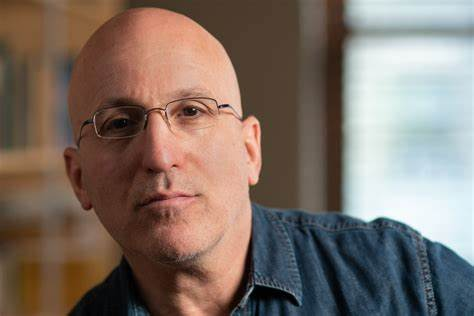
Given that this is a book about improving your writing, I confess that I often stumbled over Dreyer’s own style. His syntax struck me as bumpy. He inserts asides into the middle of sentences, which disrupts the rhythm of the language. Sometimes I had to go back to figure out his intent.
Dreyer’s English is a useful update on the state of language, and it is probably more relatable to a modern audience than Strunk & White, but I see it as a nice complement to The Elements of Style.
May 28, 2022
Book Review: In One Person
John Irving's Greatest Hits
What keeps bringing me back to John Irving’s novels is his unique style of storytelling. His stories are rarely linear, but rather employ foreshadowing and hindsight to reveal the rippling effect of important moments in his characters’ lives.
The plots may unfold in a generally chronological fashion, but when it comes to significant moments, Irving builds anticipation by jumping over the pivotal incident to show the aftermath before circling back around to describe what actually happens. It underscores the sense that life’s crises have long lasting repercussions in our lives.

My favorite Irving novel is A Prayer for Owen Meany. Also up there are The Cider House Rules, A Widow for One Year, and of course, The World According to Garp. In each of these novels, he explores a specific theme from every imaginable angle – from sexual outlaws to abortion, from storytelling to heroism and sacrifice.
In One Person returns to the theme of the sexual outlaw: Billy Abbott is bisexual, and over the course of his life, he must determine what his sexual identity means for himself. From an early age, he finds that he has crushes on all the wrong people. None of it makes sense for him, except that he admits his attraction to both women and men. As he grows older, he finds that people who are transgender probably attract him the most.
As typical in an Irving novel, Billy grows up in New England (First Sister, VT, to be specific) and attends an all-male boarding school (Favorite River Academy). He is surrounded by quirky and sometimes outsized personalities. There is his cross-dressing grandfather, his Aunt Muriel with her clarion voice, the Norwegian theatre director, and his heartthrob stepfather Richard.
There is also his best friend, Elaine, whose minimally developed breasts are a source of fascination for Billy. And there is the toxically male wrestler, Kittredge (who is more than a passing nod to Steerforth from David Copperfield).
Over the course of the novel, Billy discovers that he wants to be a writer – and later as an adult, he writes novels about sexual outlaws. Along the way, he has various relationships with men and women, who teach him the imperativeness of being the truest version of yourself, no matter how that is defined.

The most heartbreaking section of the novel covers the AIDS epidemic. Billy watches many friends and lovers succumb to the disease, under the government’s heartless denial of the crisis. In his pull-no-punches prose, Irving describes the various forms that the disease takes, and how hopeless Billy and his friends feel in the face of inevitable death.
I wanted to like In One Person more than I did. It certainly reads like a John Irving novel, but more like a Greatest Hits than an original tale. There is the small town atmosphere of New England, the boarding school, the wrestling, the theatre, and the writing life that have appeared in so many other Irving books. And many supporting characters feel like repertory actors who have wandered in from other stories: They play their accustomed parts and nothing more. In some cases, they stagnate into archetypes rather than grow in any discernible fashion. For example, Billy’s mother grows increasingly bitter and taciturn, and while the reasons for it are given, it doesn’t generate any sense of empathy from Billy himself. He and his mother are all but estranged, but to what purpose?
My biggest complaint is the role that cis-women are relegated to. Most of the women come across as shrill, angry, bitter, and unsympathetic. Much of the support which Billy experiences comes from the cis-males and transgender females he encounters. Given that the story takes place in the 1950s and 60s, they are a surprisingly enlightened lot when it comes to Billy’s bisexuality. In fact, one of the most important persons to Billy is the town librarian, and when her story is revealed, it is the men of the town who champion her rather than any of the other women.
Also, the fact that Billy is bisexual rather than hetero- or homosexual is an important aspect of his identity. While he has relationships with various people, there is seemingly more weight given to his male partnerships. Anytime it is mentioned that he is in love with a cis-woman, it is rather tossed off as an effort to underscore his bisexuality. I never got a sense that these female partners had any long lasting impact on his life.
It is unlike Irving to favor one gender over the other, so I wonder if I’m missing something. I found myself wanting to know more about Billy’s mother, his Aunt Muriel, and Kittredge’s mother. They play their roles from a marginalized position, while the men (e.g., Billy’s grandfather and stepfather) are much more actively engaged in his development.
Overall, In One Person boldly examines sexual identity in its many and varied forms. And it gives you what you expect from a John Irving tale. But in the end, I found the scenarios recycled from earlier novels, and the characters as either underdeveloped or not terribly sympathetic. Even Billy as the narrator, at times, comes across as not very likable.
It is not Irving's worst novel; it's just not one of his best.
April 11, 2022
Book Review: Caramel Pecan Roll Murder
Over the last few months, I’ve been reading several hefty books, so I was looking for something on the lighter side. That’s why, when I spotted it in the library, I picked up Joanne Fluke’s Caramel Pecan Roll Murder. It looked like the right sort of antidote to heaviness.

Caramel Pecan Roll Murder is the 28th book in the series which follows the adventures of talented baker and amateur sleuth Hannah Swensen. It’s a cozy mystery series set in Minnesota, and the playful hook about the series is that in between chapters, there are copies of the recipes featured in the story. You get all sorts of recipes for chocolate cookies, brownies, and muffins, and according to the characters in the books, all are equally delicious.
In Caramel Pecan Roll Murder, Hannah is taking a break from her work at The Cookie Jar to help out a friend at a local inn which is hosting a fishing competition. From early morning to evening, Hannah is busy baking tasty treats and serving up buffet meals for the competitors. Along the way, she discovers a dead body, so she puts on her sleuthing cap and sets about gently interrogating suspects.
Typically, I don’t read mysteries – though I do enjoy them. I’m simply not terribly adept at figuring out who the murderer is. And it’s not like I was expecting grand literature (after all, this is a cozy), but I did not anticipate being so supremely bored. The murder mystery plot is negligible, with little time given to introducing the murder victim or even any of the suspects, most of whom remain offstage for the majority of the book, and you only learn about them through Hannah’s discussions with her friends.

The majority of the book is spent describing casual conversations between Hannah, her sister Andrea, and various friends as they drink coffee and indulge in plates of cookies. The author, who is clearly fond of these characters, lets them chat about life and love, but to no discernible purpose to solving the mystery itself.
And the characters behave in remarkably peculiar ways. When Lily learns that her fiancé is dead, she goes into shock. Yet, a few minutes later she is raving over Hannah’s latest cookie creation. Oh, then she remembers to be sad because her fiancé is, you know, dead.
Conversations often contain redundant information, along the lines of Hannah discerning a possible fact then sharing that fact with her sister and then repeating that fact to the sheriff’s deputy and partner. How many times must the same point be made?
On the other hand, some scenes even contradict themselves. At one point, Sonny is described as a functional alcoholic: someone who drinks heavily during the night but appears sober in the morning. Sonny’s coworker Joey says in one paragraph that Sonny was clearly still drunk after his last bender, and at the bottom of the same page, he claims that he wouldn’t have gotten in a boat with Sonny if he’d known that he was still drunk. Huh?
Maybe my expectations were too high. Fluke’s bestselling series is clearly popular with fans, and it does have a sort of charm. But I doubt I will be tempted to taste any more of these mysteries.
March 22, 2022
Book Review: The 1619 Project
In A People’s History of the United States, Howard Zinn writes that “there is no such thing as a pure fact, innocent of interpretation. Behind every fact presented to the world – by a teacher, a writer, anyone – is a judgment. The judgment that has been made is that this fact is important, and that other facts, omitted, are not important.”
While reading The 1619 Project: A New Origin Story, I kept feeling like I was reading the facts that have been consciously omitted from the historical narrative of the United States. Certainly, many of these issues around enslavement have been explored and presented in books, movies, and documentaries, but what is distinctive about The 1619 Project is that these issues are brought to centerstage. They have been gathered into one text as a means of reporting a history of the U.S. that is often overlooked, marginalized, or simply eliminated.
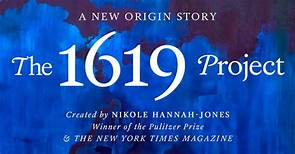
The 1619 Project: A New Origin Story is an anthology of essays, poetry, and prose by various writers that explores the legacy of enslavement in shaping the United States. It focuses on the pervasive racist attitudes and policies that continue to suppress and harm Black citizens, and it does this by following the narrative thread through politics, citizenship, incarceration, capitalism, and justice. The essays touch on health care, religion, and music, even urban planning as examples of how Black identity and participation in the U.S.’s history have been denied or appropriated or reframed so that their involvement is pushed to the side.
In other words, Blacks have influenced much of U.S. culture but they are not given credit for it because the tendency is that the only true history of our country involves what White people do.
In the essay, “Progress,” Ibram X. Kendi writes:
“Inequality lives, in part, because Americans of every generation have been misled into believing that racial progress is inevitable and ongoing. That racial progress is America’s manifest destiny. That racial progress defines the arc of American history since 1619. That ‘things have changed dramatically.’ In fact, this has more often been rhetoric than reality, more often myth than history. Saying that the nation can progress racially is a necessary statement of hope. Saying that the nation has progressed racially is usually a statement of ideology, one that has been used all too often to obscure the opposite reality of racist progress.”
Kendi describes the constant pendulum swing that occurs anytime there is an effort at “racial progress”; the pendulum always swings back to racist policies. Such as, Black men (not women) gained the right to vote, but then Southern Democrats set into place policies that blocked them from voting (e.g., they had to own property in order to vote).
There has been some backlash to The 1619 Project, most particularly that some historians and journalists take exception to how history is interpreted. Even Donald Trump, as president, commissioned the 1776 Project to promote a “patriotic education.”
What these critiques overlook, in my opinion, is that The 1619 Project is endeavoring to raise awareness of aspects of U.S. history that are often overlooked. The essays reframe the familiar narrative so that questions can be asked, new perspectives can be considered, and a better understanding of racist policies can be addressed and, hopefully, resolved.
Given that we live in a diverse culture – not simply a White one – it would benefit us all to consider a more diverse, critical perspective of how we got here. As a white man, I am still running to catch up on all that I was not taught throughout the course of my life. Fortunately, I have had some effective guides along the way to open my eyes, but even so I appreciate how this book is encouraging me to keep listening for new voices, because the whole story has not yet been told.
February 1, 2022
Book Review: Fuzz
A bear gets into garbage. An elephant tramps through a town. An albatross interferes with a Naval Air Station. Animals go about doing their thing with no regard for how it impacts the environment, or more specifically, human environments. And humans have to respond.

In Fuzz: When Nature Breaks the Law, Mary Roach explores the intersection of Nature with human life. Not simply the problem of deer being killed on busy roads, but also dying trees that can sometimes topple onto unwary hikers. In fact, there are such a lot of intersections out there that some agencies have gone in search of experts to address the unexpected problems. After all, how do you deal with macaques who like to mug people in exchange for food? Or what should the Vatican do when gulls vandalize the flowers before an Easter service?
Roach has written many books on quirky subjects, such as the various uses for human cadavers, the science of sex, and a journey through the alimentary canal. In Fuzz, she takes us on another curious exploration of the unexpected. I kept finding myself saying, “Who could imagine ...?” It wasn’t necessarily that animals or plants can be treated as a serious nuisance, even a deadly one, but rather that humans will resort to creative and at times downright peculiar solutions to the problems.
One of the more inventive solutions was the Robird, a hawk-shaped drone designed to scare off flocks of birds. It flaps its wings and soars on thermals, like a real hawk. Check out the clip for a demonstration:
https://www.youtube.com/watch?v=i3g1YqYGwNY
It’s certainly a testament to human creativity. But other solutions are a bit more unusual, such as dropping poisoned mice embryos via parachutes to quell an infestation of tree snakes. It’s not that the endeavor was unsuccessful; it was simply too time-consuming to attach parachutes to each morsel.
Roach exhibits abundant curiosity in her exploration and often tempers the gritty details with her trademark dry sense of humor:
“I understand the desire of those whose job sometimes requires them to kill an animal to avoid that verb. Kill has a taint of murder. The sheer number of euphemisms suggests a long-running struggle to find something right. I collected them for a while: cull, take, dispatch, remove, lethally remove. As a word person, I balk at euthanize, which implies the relief of suffering, and harvest, which makes animals sound like corn. I heard one person say “use lethal force on,” which seems better suited to SWAT operations and Gary Busey movies.”
It’s a difficult job that Roach has in any of her books. She is writing about some squeamish topics. In Fuzz, she is addressing the destruction of animals and plants, which raises questions of ethics and rights. Do humans always take precedence? Must we respond with lethal force? Are there other ways to solve the problems that don’t create their own set of problems? When you’re getting into birth control for monkeys and gene modification in mice, have you gone too far?

I’m a big fan of Roach’s work and always come away with a greater appreciation for the variety of skills that people have. Who knew that researchers had created such a thing as RISUG (reversible inhibition of sperm under guidance)? But also, I sometimes quailed at the tendency to treat any nature-related problem as an assault on human rights.
Maybe this is why Jurassic Park is one of my favorite movies. It raises some of the ethical questions when humans try to create an artificial environment to maintain control over animals. To quote Dr Ellie Sattler: “You never had control, that’s the illusion!”
January 6, 2022
The War of the Ring
Every time I read a volume in The History of Middle-Earth (Christopher Tolkien’s compendium of his father’s writing), I puzzle over who the audience is supposed to be. It reads like a scholarly work, with copious footnotes, and yet it is targeted at fans of The Lord of the Rings (LOTR).

I just completed Volume 8: The War of the Ring (1990), which is the third book to address the writing of LOTR. It covers the battle for Helm’s Deep, the Ents’ destruction of Isengard, and the Battle of the Pelennor Fields outside of Minas Tirith. There is also a section on Frodo and Sam’s journey through the Emen Muil Mountains, their encounter with Faramir, and finally the fight with Shelob the spider.
I read The History of Middle-Earth as much for its insight into the writing process as for being a Tolkien fan. There is a feeling of completeness to LOTR, as though the story could not unfold in any other manner. So, to see the extent of Tolkien’s struggles makes the final version all the more impressive. So many times he could have gone down any number of roads – and probably would have made it work out fine – and yet the way the story does unfold seems right.
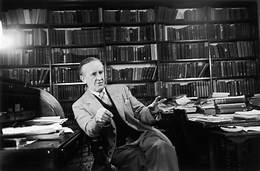
Tolkien: "Behind me are my notes for Chapter One."
Tolkien had a history of tinkering with his stories. The tales from The Silmarillion were revised and rewritten countless times, and even still he never reached a final version that satisfied him. (My favorite take has Sauron as a giant-sized black cat guarding Morgoth’s fortress). But in his relentless combing through his stories, typically he did untangle the most gnarled knots. At least for LOTR, he got where he wanted to go.
As evidenced in The War of the Ring, Tolkien wrote many outlines, notes, and drafts, and to make it even more complicated, he often wrote over earlier drafts. His handwriting at times was incomprehensible (even to Tolkien himself), so that his son had quite a job to identify words out of the crabbed handwriting.
There are interesting glimpses into alternative takes on certain events, such as Eowyn dying during her fight with the Nazgul, and Denethor not being a completely atrocious father. But you can also see Tolkien working it out – going over plot points, trying to determine what the smoothest course will be. If you have the patience, the various versions of episodes gives a curious insight into the creative process.

The War of the Ring, admittedly, has its tedious moments. There is excessive attention to the chronology of events. Given that the Fellowship has fractured by this point – Frodo and Sam heading to Mordor, Pippin and Merry captured by Orcs, and Aragorn, Legolas, and Gimli in hot pursuit – Tolkien had his work cut out for him in terms of keeping the events in line. For example, one of the Nazgul flies west out of Mordor on its way to Orthanc. Tolkien had to keep redetermining what date that occurred, given that all his characters are in motion. If Frodo and Sam are at the crossroads, where would that put Aragorn? And when the Nazgul flies overhead, which day is it? And let's not even get into Tolkien's obsession with the phases of the moon.
Ultimately, I’m not sure I cared to drill down into that much data. I was more fascinated by the nuggets of information about Faramir, Eowyn, and Shelob (who at one point was a whole pack of spiders).
The next volume in the 12-volume history is Sauron Defeated, which covers the completion of LOTR. The remainder of the series continues with later versions of The Silmarillion.
January 3, 2022
The Top Ten Books (I've Read) of 2021
Several books this year were recommended by family and friends, which sent me on unexpected explorations of mythology, religion, and philosophy. There was also a fair amount of rereading favorites from the past – The Lord of the Rings and Philip Pullman’s His Dark Materials, plus a few classics like Dickens, Austen, and Eliot.
Overall, my reading journey meandered between fiction and nonfiction, and in some cases, somewhere in-between. Some books were breathtaking, while others were a bit of a slog.
In alphabetical order (by author), here are my top ten books.
The Top Ten:
Cassandra at the Wedding, Dorothy Baker
Cassandra comes home for her twin sister Judy’s wedding. The twins have distinct personalities, which somehow unsettles Cassandra, who desperately needs Judy to be her alter ego. The author alternates between Cassandra’s and Judy’s voices, which give fascinating insight into their perspectives. A beautiful examination of quirky characteristics and family dynamics.
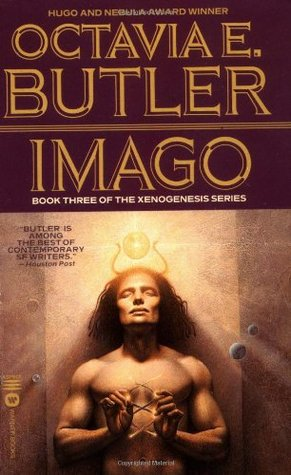
Imago, Octavia E. Butler
Imago is the third book in Butler’s Xenogensis trilogy (aka Lilith’s Brood). Any of the three books is highly recommended, but Imago is my favorite. In the aftermath of a nuclear war, the remaining humans are rescued by the Oankali, an intergalactic race that interbreed with other species as a form of augmentation. Imago focuses on Jodahs, the first Ooloi construct of humans and Oankali. As it matures, Jodahs discovers how relationships shape and form us. For the first time in the series, Butler uses first-person narration for Jodahs’ story, which brings a warm degree of empathy to the character.
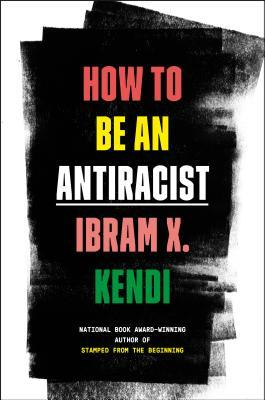
How To Be an Antiracist, Ibram X. Kendi
Kendi examines how to address racist policies – i.e., any policy that creates inequity based on skin color – rather than racism as a broader concept. He uses events from his own life as a model of how he became aware of how deeply engrained the status quo of racism is. At the core of his recommendations is that actions must counteract the structures of racism. No person is without prejudice, he argues, but it is our responsibility to work in opposition to anything that promotes racial hierarchy. A seminal work.

This Tender Land, William Kent Krueger
Odie and his older brother, Albert, flee from a cruel orphanage along the Gilead River. Along for the journey are Mose, a mute of Sioux heritage, and Emmy, who may have visions of the future. Their adventures include encounters with a drunken farmer, and a faith healer and her entourage. As they make their way to their aunt’s home in St Louis, Odie learns about the complexities of life. Krueger’s prose is lyrical, and his storytelling is compelling. The ending felt rushed, with too much information thrown at the reader, but it did not undermine my thorough enjoyment of this novel.

Hell of a Book, Jason Mott
A writer on a book promotion tour can no longer tell what is real and what isn’t. A young boy, cruelly nicknamed “Soot” because of the darkness of his skin, develops a talent for being invisible, in the aftermath of his father’s death. At times satiric, Mott’s novel is also a heartbreaking critique of racism, in particular the exhaustive grief that accumulates in the face of it. Profound.
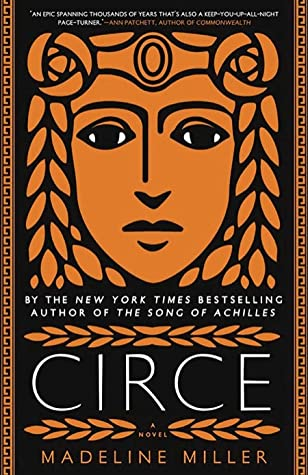
Circe, Madeline Miller
Miller takes us on a different type of odyssey: the nymph Circe, the daughter of the god Helios and Perse. Considered a lesser being, she is overlooked by her family, until a practical joke goes awry. She is banished to the Isle of Aeaea, where she studies herbs and magic, and discovers her own independence. Various Greek gods show us from time to time, but it is her encounter with Odysseus that changes the course of her life. Along the way, she learns the heartache of immortality and the necessity of finding her place in the world. Miller’s style is rich in metaphor.

Paradise Lost, John Milton
After rereading Philip Pullman’s His Dark Materials trilogy, I got interested in revisiting Milton. Having read it twice for college and graduate school, I never figured I’d read it again. This time around, I wasn’t reading it for a term paper or an exam, which allowed me to pay more attention to the story and themes. While the verses get wordy, overall I was entertained, which is not something I expected to say about Milton.

The Immortality Key: The Secret History of the Religion with No Name, Brian C. Muraresku
I love a book that turns history on its ear. Muraresku delves into religious rituals from prehistoric times, in particular the use of drugs to bring about religious ecstasy. Who knew that fermented beer would be such a mind-altering experience? The author traces the practices from the ancient cults of Demeter and Persephone, and draws plausible links to Christianity’s own eucharist. While at times there is a smattering of conspiracy theory in his argument, overall it raises some interesting questions about some early practices which brought people closer to God.

The Friend, Sigrid Nunez
The unnamed narrator has lost a close friend and mentor to suicide, only to wind up adopting his elderly Great Dane. What could be a sentimental tale of a woman and a dog is actually a profound examination of friendship, literature, grief, and loss. While a novel, it reads more like a stream-of-conscious memoir, which allows the author to interconnect themes from literature. One of the tricks of the novel is in what it doesn’t say about the narrator or the mentor, and yet still addresses the complexities of their friendship. My only wish for the novel is that it have a more enticing title, but the truth is I couldn’t come up with a better one.

What the Hell Did I Just Read? Jason Pargin (writing as David Wong)
A sequel to John Dies at the End, it’s another near-apocalyptic adventure for John and Dave. As always, they encounter some horrifying interdimensional beings, have some wacky escapades, and make some soul-searching discoveries. Pargin’s decision to alternate between Dave’s first-person narration and third-person for John and Amy makes the writing a little uneven, but at the heart of the story is Dave’s discovery that his life needs to change. A fun read.
Two honorable mentions: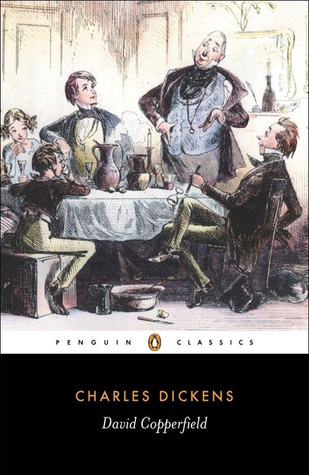
David Copperfield, Charles Dickens
I’m a Dickens fan, and this is still my favorite of his novels. It’s the best balance of humor, drama, and tragedy. And I cannot think of a better opening line of a bildungsroman than “Whether I shall turn out to be the hero of my own life, or whether that station will be held by anybody else, these pages must show.” Not only does it make you think about the importance of your own actions – and whether they are heroic – but it also reminds us that we are surrounded by many heroes and villains in life.

Godzilla FAQ, Brian Solomon
A fairly comprehensive history of Godzilla and all of its many sequels. The author breaks it down to the important players – director Ishiro Honda, special effects designer Eiji Tsuburaya, and composer Akira Ifukube – plus the many actors who have played Godzilla over the course of 50 years. At times, the writing is redundant, and other times it doesn’t go into as much depth as I would have liked, and definitely not enough photos. It’s better than a movie tie-in book but not quite a critical study. Overall, I was entertained.
The complete list:Speak, Laurie Halse Anderson
Winesboro, OH, Sherwood Anderson
Sounder, William H. Armstrong
Persuasion, Jane Austen
Cassandra at the Wedding, Dorothy Baker
The Vanishing Half, Brit Bennett
Devolution, Max Brooks
Tarzan of the Apes, Edgar Rice Burroughs
Adulthood Rites, Octavia E. Butler
Imago, Octavia E. Butler
Ready Player Two, Ernest Cline
David Copperfield, Charles Dickens
The Mill on the Floss, George Eliot
My Side of the Mountain, Jean Craighead George
Cold Comfort Farm, Stella Gibbons
Feline Philosophy: Cats and the Meaning of Life, John Gray
The Library of the Unwritten, A.J. Hackwith
Pompeii, Robert Harris
Beowulf, Maria Dahvana Headley (trans.)
The Summer Book, Tove Jansson
Kill Switch: The Rise of the Modern State, Adam Jentleson
How To Be an Antiracist, Ibram X. Kendi
Different Seasons, Stephen King
The Woman Warrior, Maxine Hong Kingston
This Tender Land, William Kent Krueger
The Bishop’s Heir, Katherine Kurtz
The King’s Justice, Katherine Kurtz
The Quest for Saint Camber, Katherine Kurtz
Crazy Rich Asians, Kevin Kwan
Bird Box, Josh Malerman
Batman: The Dark Knight Returns, Frank Miller
Hell of a Book, Jason Mott
Circe, Madeline Miller
Paradise Lost, John Milton
The Immortality Key: The Secret History of the Religion with No Name, Brian C. Muraresku
The Friend, Sigrid Nunez
We Were the Mulvaneys, Joyce Carol Oates
What the Hell Did I Just Read? Jason Pargin (David Wong)
Picture Perfect, Jodi Picoult
The Golden Compass, Philip Pullman
The Subtle Knife, Philip Pullman
The Amber Spyglass, Philip Pullman
Mediterranean Diet Cookbook for Dummies, Meri Raffetto & Wendy Jo Peterson
The Best American Science Fiction and Fantasy 2021, Veronica Roth (ed.)
Lifelong Yoga, Sage Rountree and Alexandra DeSiato
Harry Potter and the Order of the Phoenix, J.K. Rowling
Harry Potter and the Half-Blood Prince, J.K. Rowling
Harry Potter and the Deathly Hallows, J.K. Rowling
Hidden Figures, Margot Lee Shetterly
Godzilla FAQ, Brian Solomon
A Series of Unfortunate Events: The Bad Beginning, Lemony Snicket
Fer-de-Lance, Rex Stout
The Fellowship of the Ring, J.R.R. Tolkien
The Two Towers, J.R.R. Tolkien
The Return of the King, J.R.R. Tolkien
The Adventures of Huckleberry Finn, Mark Twain
This One Wild and Precious Life, Sarah Wilson



